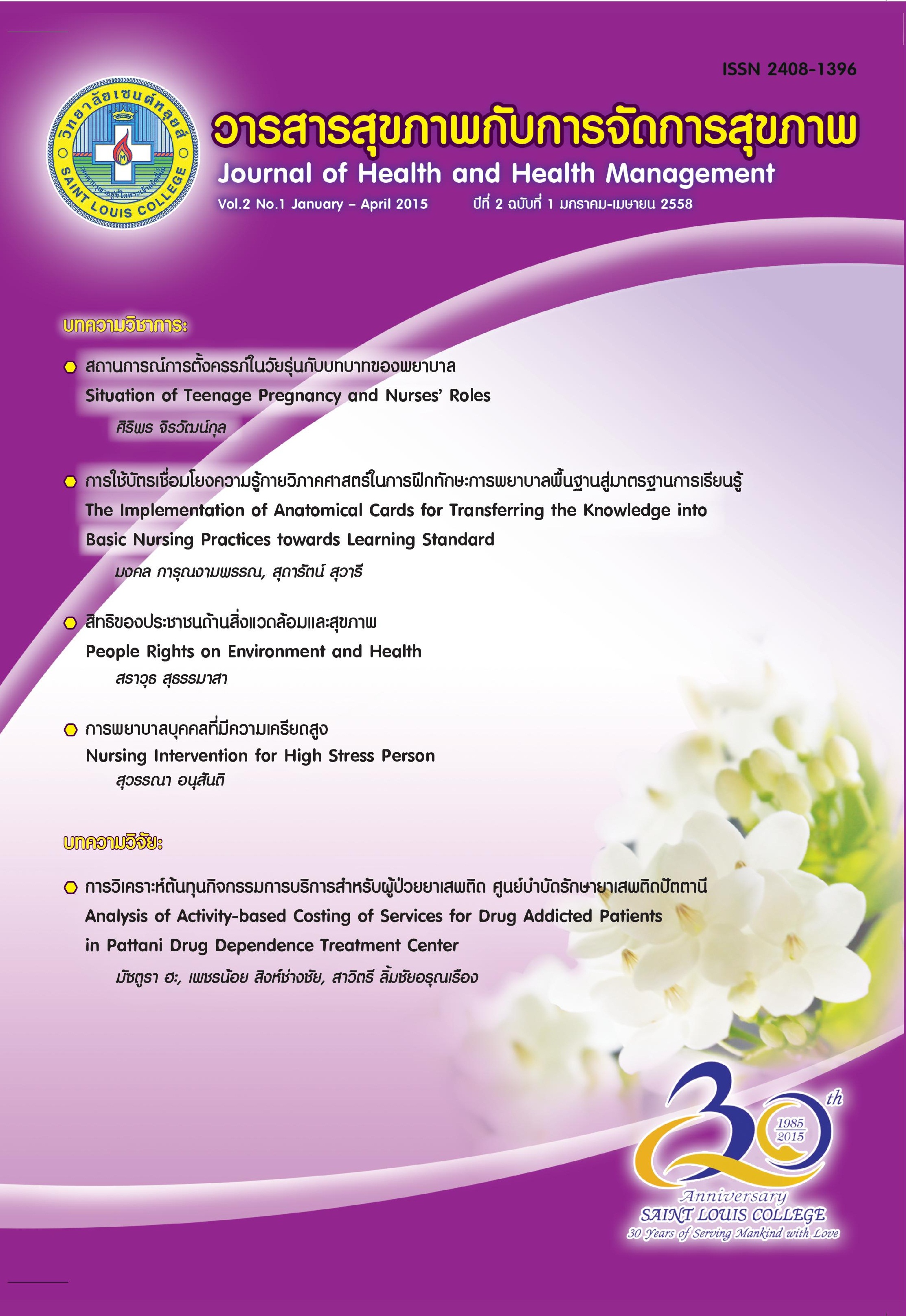The Implementation of Anatomical Cards for Transferring the Knowledge into Basic Nursing Practices towards Learning Standard
Keywords:
anatomy, anatomical cards, practice in basic nursing skillAbstract
Anatomy is one of the professional foundation courses. This subject included the structure of human body, which is the basic for nursing students so that they will be able to see and understand the structure of the organs for being the foundational knowledge of nursing subjects in terms of theory and practice. Thus, the authors designed teaching and learning in anatomy course by using teaching method on the basic of stimulating the students’ thinking process for linking the knowledge into nursing courses. The lecturers assigned their students to create anatomical cards which linked anatomical knowledge into nursing practices for enhancing the students’ experiences and using their knowledge. In the course of nursing practicum, the anatomical knowledge cards was used as a tool for the students to review the anatomical knowledge before nursing practice, and The cards also help them to understand, have a confidence in nursing practice, and be able to explain the logic of nursing activities. Moreover, using the cards could facilitate students to achieve all of six learning outcomes of Thai Qualifications Framework for Higher Education.
References
มงคล การุณงามพรรณ และละเอียด แจ่มจันทร์. (2556). การใช้บัตรเชื่อมโยงความรู้กายวิภาคศาสตร์ ในการฝึกทักษะการพยาบาลพื้นฐาน. ใน RSU Research Conference 2013. ปทุมธานี: มหาวิทยาลัยรังสิต.
ละเอียด แจ่มจันทร์. (2554). การวิเคราะห์ปัจจัยที่ส่งผล ต่อผลลัพธ์การเรียนรู้ของนักศึกษาชั้นปีที่ 2. ใน รายงานสรุปผลการจัดการเรียนการสอน ประจำปีการศึกษา 2553. กรุงเทพฯ: คณะ พยาบาลศาสตร์ วิทยาลัยเซนต์หลุยส์.
Clancy, J., McVicar, A. & Bird, D. (2000). Getting it right? An exploration of issue relation to the biological sciences in nurse education and nursing practice. Journal of Advanced Nursing. 32(6), pp. 1522-1532.
Erickson, J.I. & Ditomassi, M. (2005). The clinical nurse leader: New in name only. Journal of Nursing Education. 44(3), pp. 99-100.
Grittiths, M.J., Bevil, C.A., O’Connor P.C. and Wieland, D.M. (1995). Anatomy and physiology as a predictor of success in baccalaureate nursing students. Journal of Nursing Education. 34(2), pp. 61-66.
Hishinuma, M., Saiki, S. & Okubo, N. (2004). Teaching structure and function of the human body using a nursing framework: Student evaluations. Retrieved from http//www.cinahl.com/cgi/bin/ Refsvc? Jid-2527 & accno..200437798 (2004, Feb 27)
Johnston, A.N.B. & McAllister, M. (2008). Back to the future with hand-on science: Students’ perceptions of learning anatomy and physiology. Journal of Nursing Education. 47(9), pp. 417-421.
Lewis, C. & Lewis, J.H. (2000). Predicting acadamic success of transfer nursing students. Journal of Nursing Education. 39(5), pp. 234-236.
McVicar, A. (2009). A post-registration solution to the ‘bioscience problem’?. British Journal of Nursing. 18(3), p. 149.
Nyatanga, L. (2005). Nursing and the philosophy of science. Nursing Education Today. 25(8), pp. 670-677.
Prowse, M.A. & Lyne, P.A. (2000). Revealing the contribution of bioscience-based nursing knowledge to clinically effective patient care. Clinical Effectiveness in Nursing. 4(2), pp. 67-74.




